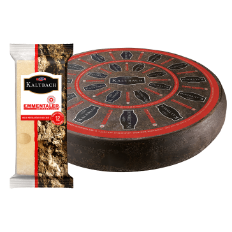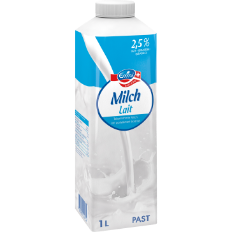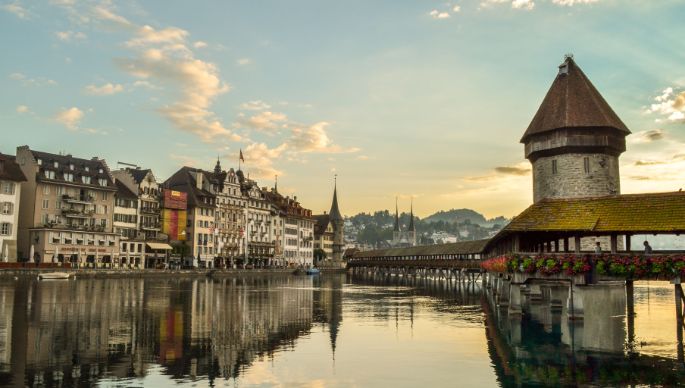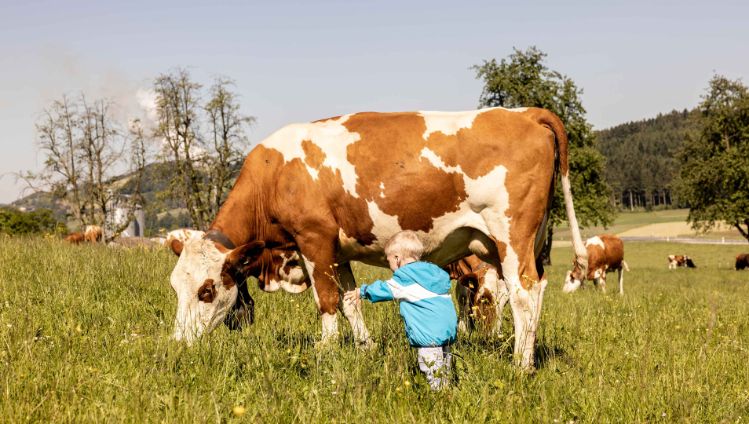
Winter milk or summer milk – which is better?
You are what you eat, as the saying goes. Is this also true for cows that eat hay in the winter and fresh grass in the summer? Let us clear things up for you.
If you’ve ever stopped off at an alpine hut in summer for a snack of bread, cheese and butter, you’ll probably have noticed that the butter is yellower than the kind you usually find in the fridge. The slightly golden hue is not a trick of the light, nor is it down to the butter starting to go off already since the alpine hut does not have a fridge. Quite the opposite in fact, it’s especially fresh and tasty.
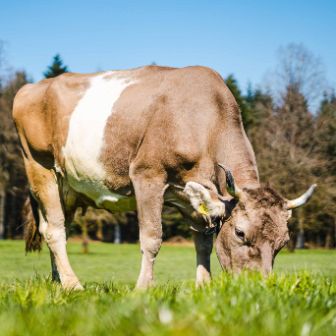
Natural colouring
This change in colour is down to what the cows eat. Once they are let out onto green pastures again in April, the cows start to eat fresh grass instead of the dry hay they get in winter. This fresh grass contains a natural plant pigment – beta carotene – which is found in orange and yellow fruits and vegetables such as carrots (Latin: carota), in dark-green vegetables and of course also in grasses.
“Butter is yellower in the summer than in the winter because of the beta carotene.“
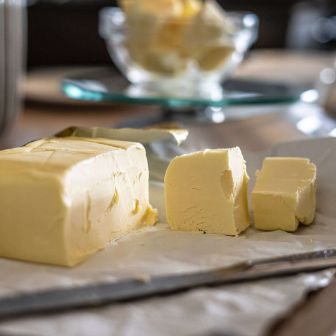
Pigment is lost during drying
Grass-fed cows produce milk that contains beta carotene, which is fat-soluble and thus accumulates in the milk fat, giving it a yellow tinge. In winter, cows mainly feed on hay, which although made from the same grass contains less beta carotene because this pigment breaks down during the drying process. That’s why butter is yellower in summer than in winter.
“Creamier” summer milk?
But does summer milk taste better than winter milk? There are those who claim that milk from cows that grazed on fresh grass is “creamier” and “richer”. But that’s not the case at all. The taste is every bit as exquisite no matter what the season.

Yellow alpine cheese
By the way: alpine cheese is always a beautiful yellow colour too, since it is only produced in summer. Kaltbach Engadiner Bergkäse is not actually an alpine cheese, even though the cows graze at around 2,000 metres above sea level. It does have a similar character, however, and is also matured for several months in the sandstone caves of Kaltbach. Plus it’s absolutely delicious, regardless of whether it is made with summer or winter milk.


